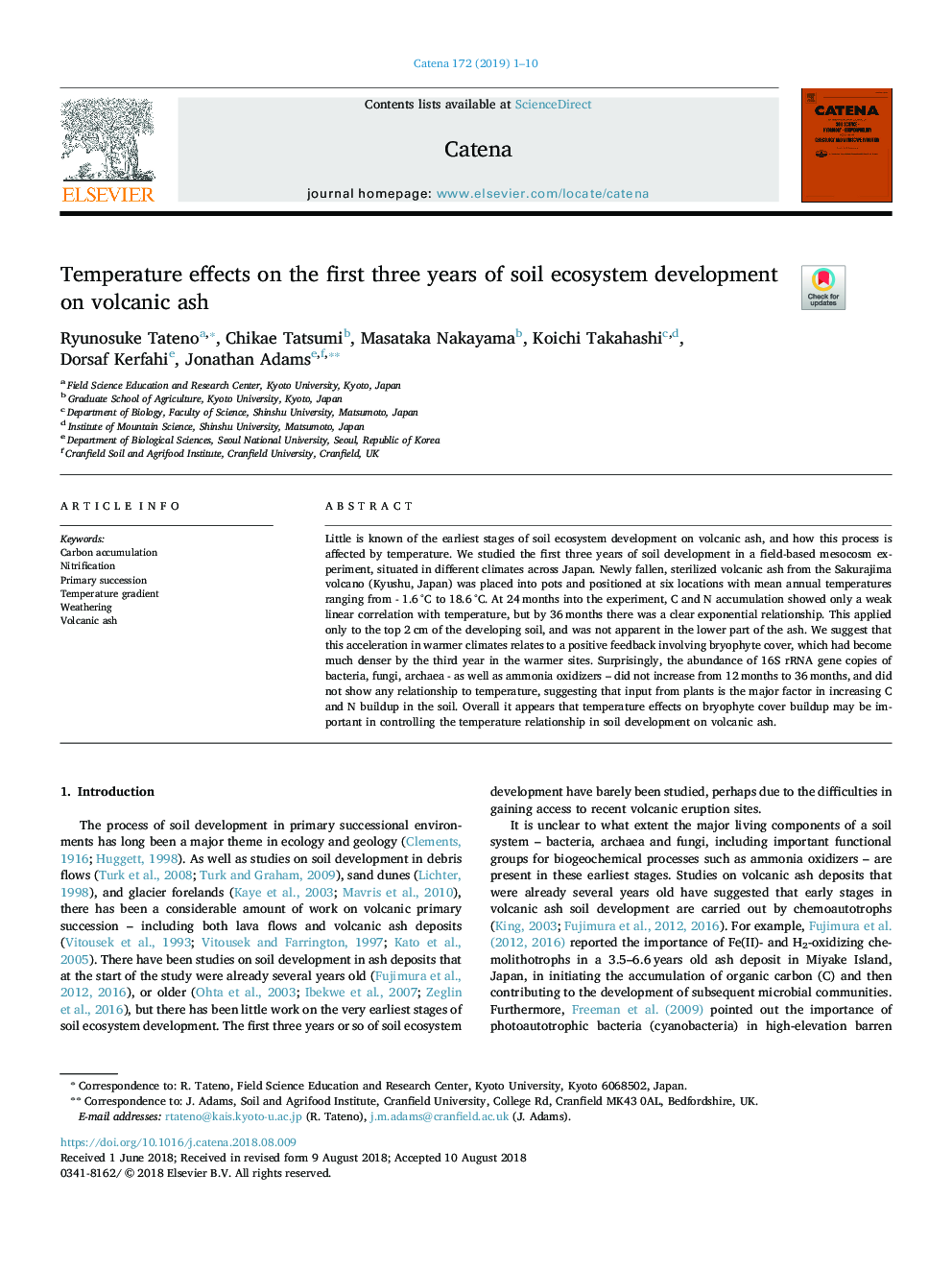| Article ID | Journal | Published Year | Pages | File Type |
|---|---|---|---|---|
| 8893310 | CATENA | 2019 | 10 Pages |
Abstract
Little is known of the earliest stages of soil ecosystem development on volcanic ash, and how this process is affected by temperature. We studied the first three years of soil development in a field-based mesocosm experiment, situated in different climates across Japan. Newly fallen, sterilized volcanic ash from the Sakurajima volcano (Kyushu, Japan) was placed into pots and positioned at six locations with mean annual temperatures ranging from - 1.6â¯Â°C to 18.6â¯Â°C. At 24â¯months into the experiment, C and N accumulation showed only a weak linear correlation with temperature, but by 36â¯months there was a clear exponential relationship. This applied only to the top 2â¯cm of the developing soil, and was not apparent in the lower part of the ash. We suggest that this acceleration in warmer climates relates to a positive feedback involving bryophyte cover, which had become much denser by the third year in the warmer sites. Surprisingly, the abundance of 16S rRNA gene copies of bacteria, fungi, archaea - as well as ammonia oxidizers - did not increase from 12â¯months to 36â¯months, and did not show any relationship to temperature, suggesting that input from plants is the major factor in increasing C and N buildup in the soil. Overall it appears that temperature effects on bryophyte cover buildup may be important in controlling the temperature relationship in soil development on volcanic ash.
Keywords
Related Topics
Physical Sciences and Engineering
Earth and Planetary Sciences
Earth-Surface Processes
Authors
Ryunosuke Tateno, Chikae Tatsumi, Masataka Nakayama, Koichi Takahashi, Dorsaf Kerfahi, Jonathan Adams,
